Stunning Images from the Dark: America's Lighthouses at Night
Veteran television news cameraman David Zapatka's "second act" is photographing lighthouses under the stars.
Portland Head lighthouse, Maine
Years later, David Zapatka, 65, would remember his first lighthouse. It was the Watch Hill lighthouse at the end of a peninsula that is the southernmost tip of Rhode Island. The lighthouse, which was built in 1855-56 to replace the original after it was destroyed by gale winds, was just a mile from where he grew up. In the summer, at night, he would listen to the crashing of the waves and, when it was foggy, which was often, the plaintive cry of the lighthouse foghorn.
"That's where we go in time of reflection, or I'd bring dates down there, and you could just sit on the wall," he recalls. "(Years later), we scattered my brother's ashes there."
When he was 13, David decided he wanted a camera. His parents said fine, if you want a camera, you have to earn the money to buy one. He got a job cleaning kennels for a local veterinarian. He raised the money and got a camera, and began taking photos.
"In high school, my ninth grade English teacher was the yearbook advisor and saw me with the camera," he says. "She asked if I'd join the staff and offered free film and process, plus a permanent hall pass to wander during study hall, It was my first press pass. I never sat in study hall in all of high school and had full access to every classroom, ball field and dance. It was like a dream."
David Zapatka
David would go on to become a successful, award-winning television news and documentary video cameraman in a career that spanned more than 40 years. But he never stopped taking still photos.
In 1993, he and his family moved to North Kingstown, Rhode Island. Nearby, beneath the Jamestown Bridge, there was a lighthouse that was built in 1899 and deactivated in 1941. For decades after, it went unattended, slipping deeper and deeper into dilapidation. and taken over by a huge population of pigeons, with predictable results. David was intrigued by the decaying husk of the old lighthouse and started taking pictures of it.
One day he learned about a local non-profit organization, The Friends of the Plum Island Lighthouse, that had gotten the deed to the old lighthouse with the idea of restoring it to its original condition. David contacted them and offered to make a documentary of the renovation. He made the documentary and a few years later, he became president of the group.
Battery Point, Crescent City, California
Alcatraz Island lighthouse, San Francisco Bay, California
In 2013, David and his wife were out on their powerboat and were anchored at Dutch Island at the western passage to Narragansett Bay. At the south end of the island, there was a lighthouse.
"I said to my wife, 'Wouldn't it be cool if I could get pictures of the lighthouse at night?'" David recalls. "Just for the hell of it. Just on a whim."
He returned to Dutch Island with his Nikon D4 camera, which can take video and still photos, and - crucially - has the ability to take long-exposure images. He set up the camera on a tripod and then used a flashlight to light the different parts of the lighthouse at different intervals while capturing it on camera, a photographic process called light painting.
"I get out on Dutch Island. It's completely dark. I took a few steps away from the camera and I light-painted the lighthouse, so it looked like there were lights out there," he says. "I was like, 'Holy shit!' I was able to do this."
Egmont Key lighthouse, Florida (left). Port Judith lighthouse, Rhode Island (right)
David became curious about existing nighttime images of lighthouses. Were there many? Were there any? He knew that for decades it would have been difficult to shoot a lighthouse in darkness, not just because of the technological challenge but because lighthouses tend to be inaccessibly located on government property. As he suspected, there are very few.
"If you do a 'lighthouse pictures' search, you're going to get a million," he says. "If you do a 'lighthouses at night' search, you're going to get a tiny, tiny fraction."
David set out to take photos of as many lighthouses at night as he could, using television lights and long exposure photography to achieve what he calls Rembrandt lighting. So far, he's photographed 284 and counting.
"I had no idea it would turn into this huge project," he says.
Little River lighthouse, Maine
Umpqua River lighthouse, Oregon
During the peak of Covid, David began volunteering his photos to the United States Lighthouse Society, and traveling to lighthouses around the country in a donated RV, nicknamed Ruthie.
In 2017, David published his first book of lighthouse photos, Stars & Lights/ Darkest of Dark Nights. It was followed by USA Stars & Light/Portraits from the Dark in 2020. His third book is due out next year, as well as a children's book featuring Ruthie. [His books can be purchased at the website, www.starsandlighthouses.com or via Shopify]
A 2023 New Yorker magazine article put the then-current figure of lighthouses that still operate as navigational aids at 850 (oddly, Michigan has the most, 129). Hundreds of others that are no longer needed have been deeded by the U.S. Coast Guard to private owners or non-profit preservationists.
Once upon a time, each lighthouse had lighthouse keepers, known as "wickies," to operate the lights. The keepers usually lived on the premises in bleak isolation and harsh conditions. Today, there are none, like so many things, driven to extinction by technological progress. The last working lighthouse keeper was a woman named Sally Snowman who tended the Boston Light, the oldest in the country, dating back to 1716. But she retired at the end of 2023. Today, all functioning lighthouses are fully automated.
The last working lighthouse keeper, Sally Snowman (left), retired at the end of 2023, photo credit: Coast Guard News
It's believed that the first lighthouse in the world was the one built on the island of Pharos just outside the harbor of Alexandria, Egypt in the third century B.C. Centuries later, it was felled by an earthquake. There are lighthouses still standing that were erected in the Middle Ages.
"The Maya used to build monuments lit from within to signal places where it was possible or perilous to bring a boat ashore," writes Jazmina Barerra in her book, On Lighthouses. "The Celts used beacons to send messages along the coast. But it was the Greeks who gave these lights the name Pharos. Fire indicating the sea's end." It is from pharos that comes the French word "phare" for lighthouse, and "faro" in Spanish.
The lighthouse on Pharos Island near Alexandria Egypt, built in the third century BC, was believed to be the world’s first.
Today, even after the mystique of lighthouse keepers doing their lonely duty has been extinguished, there remains something fascinating and wonderful about a lighthouse. Something ancient and yet enduring. Something stolid and dramatic, especially at night.




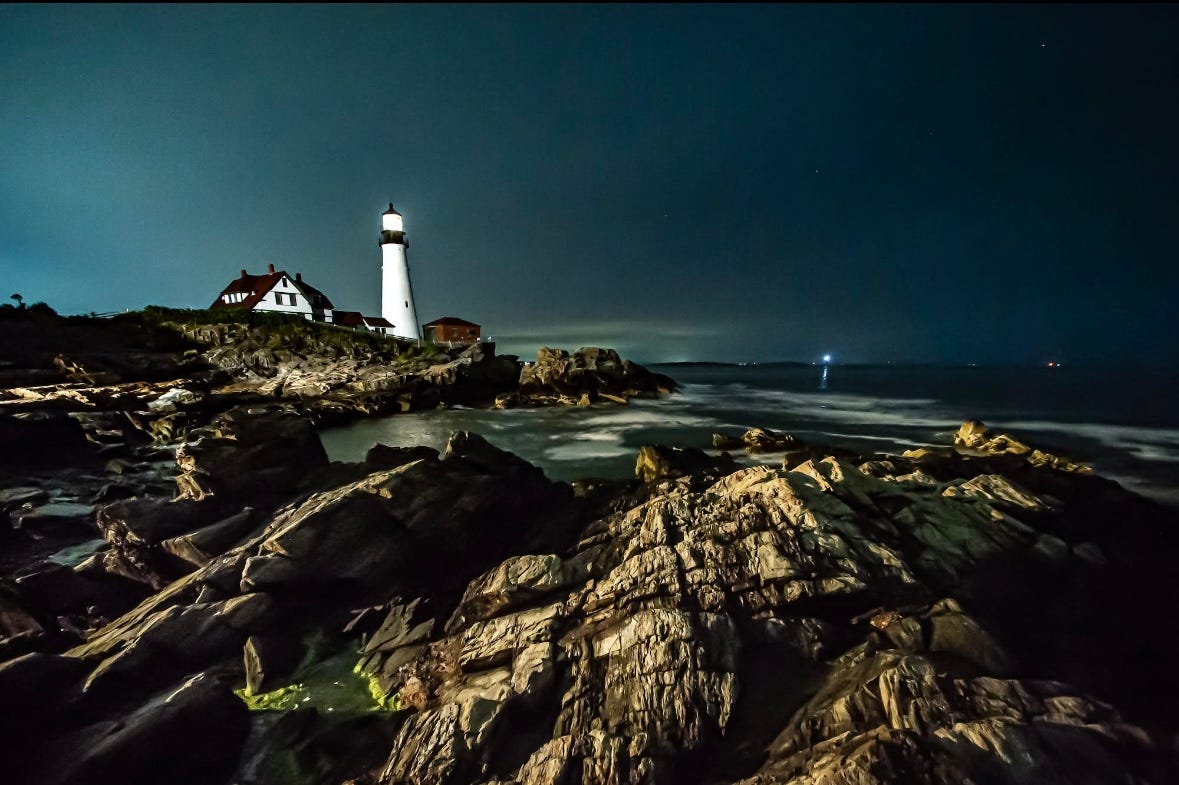
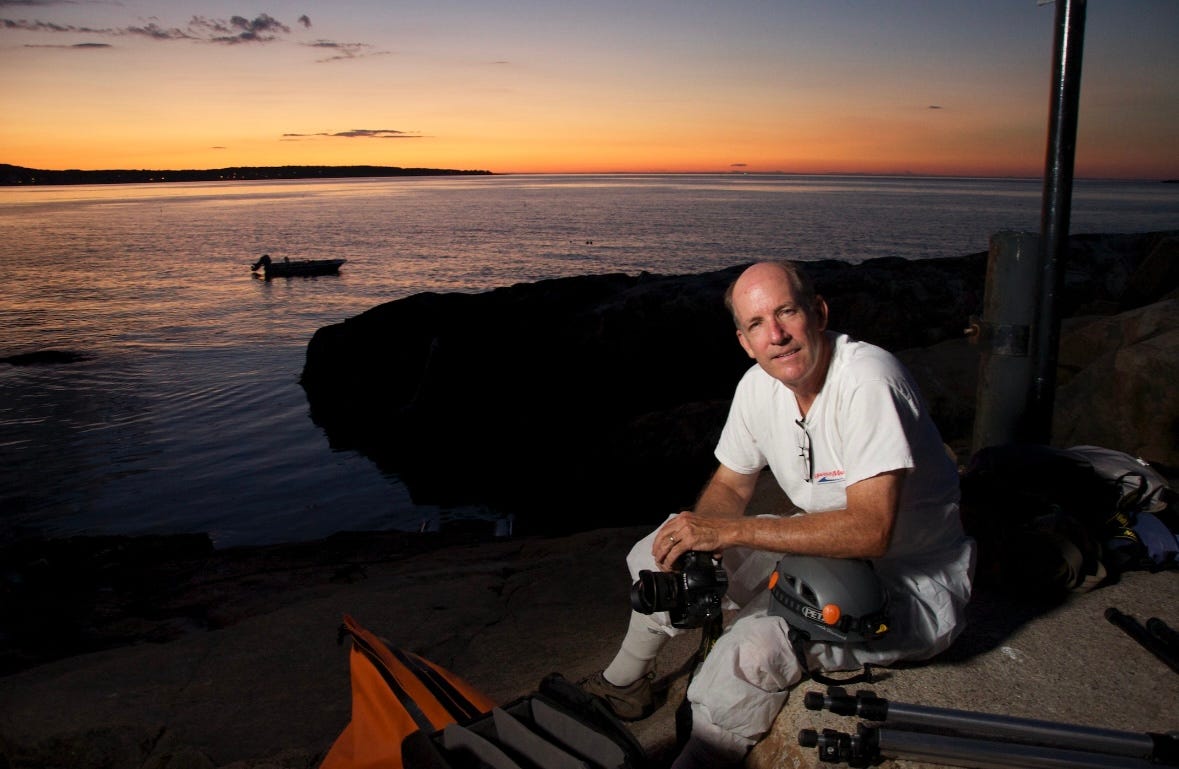
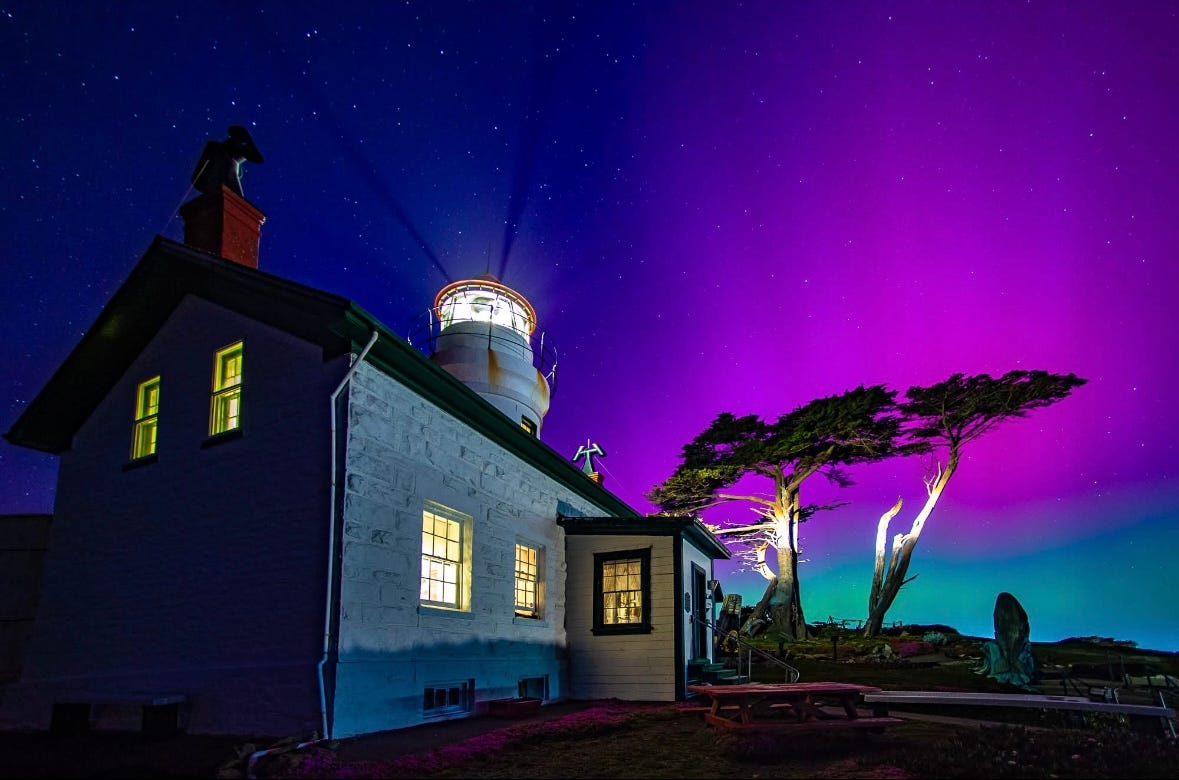
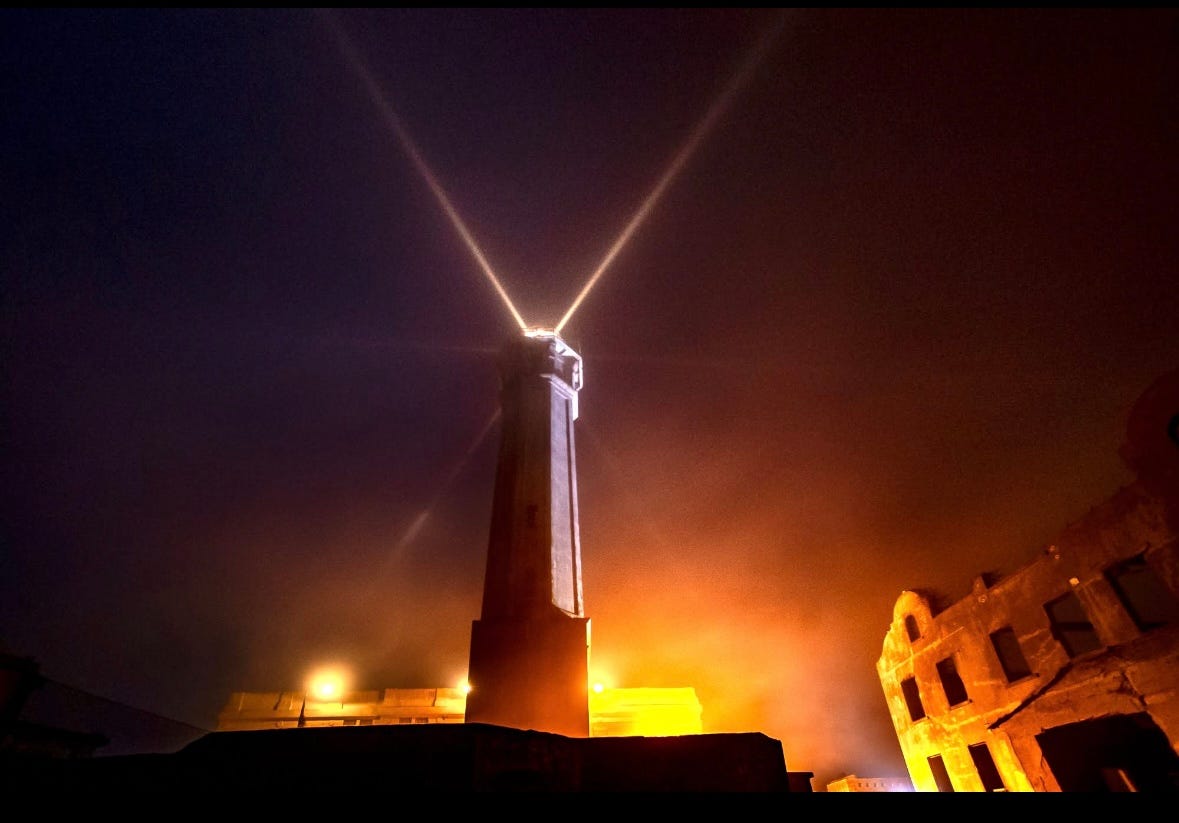
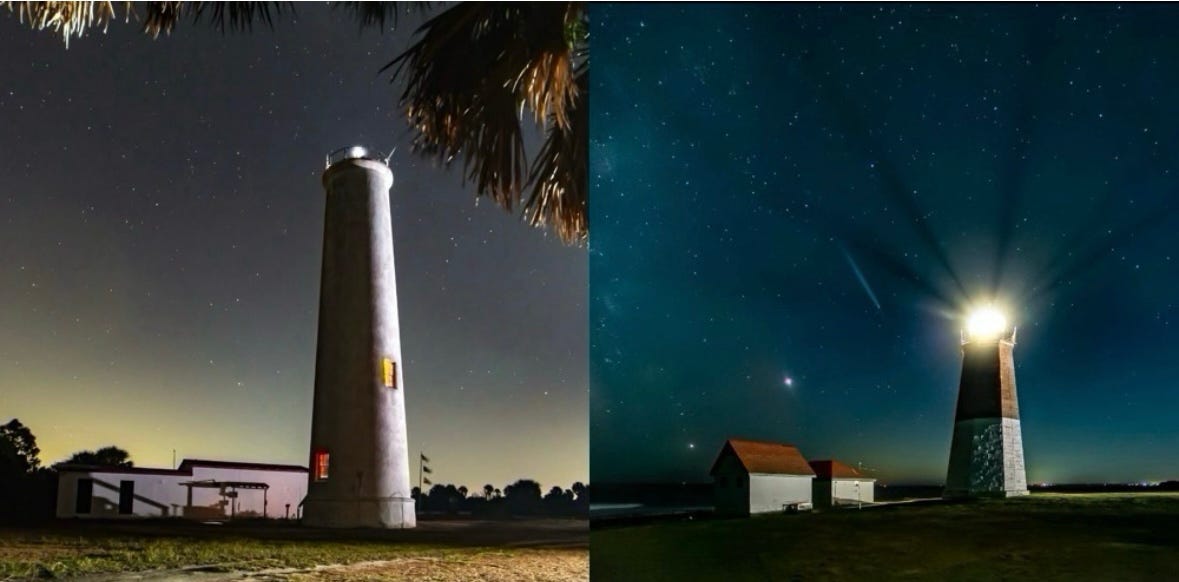
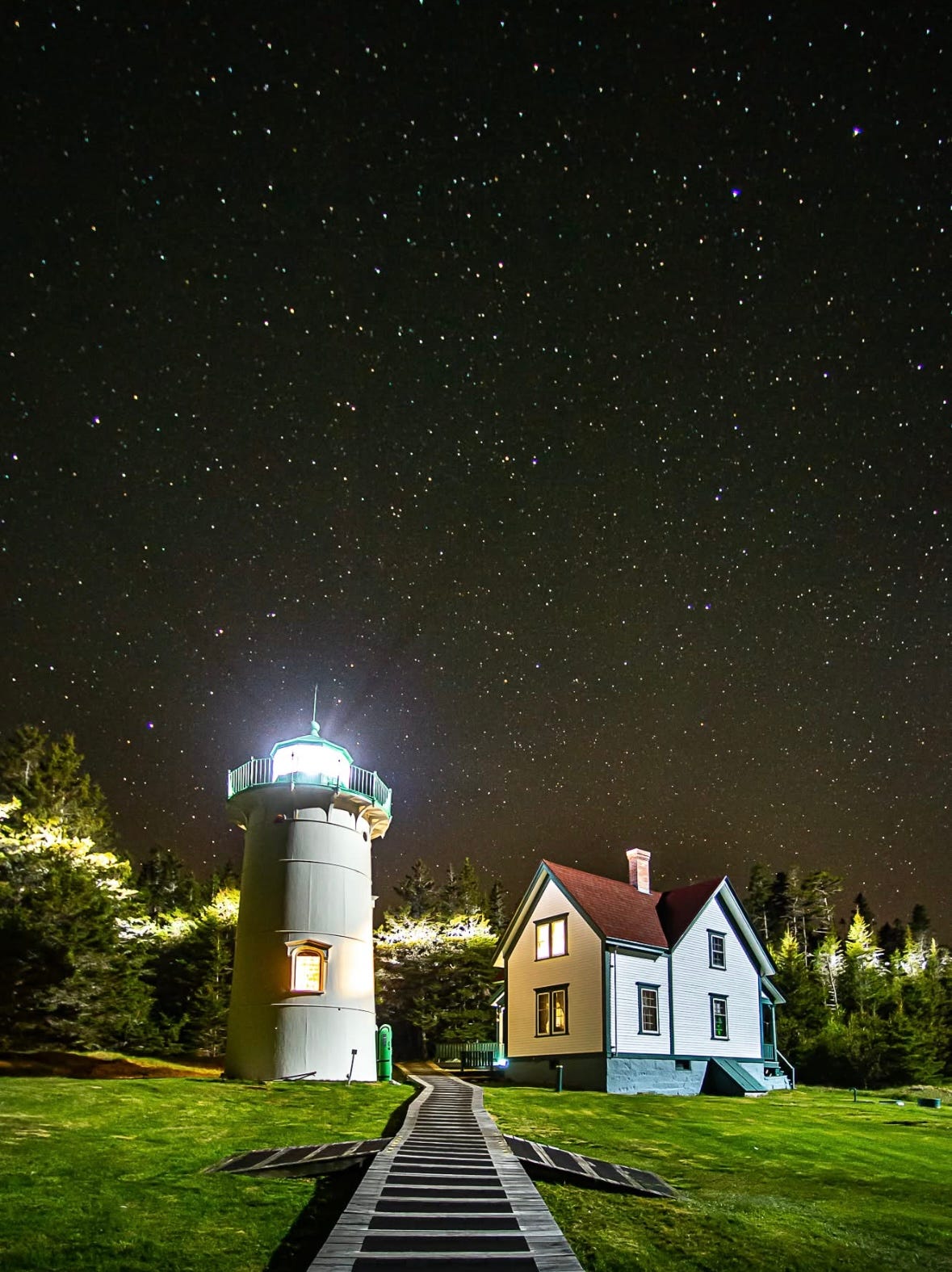
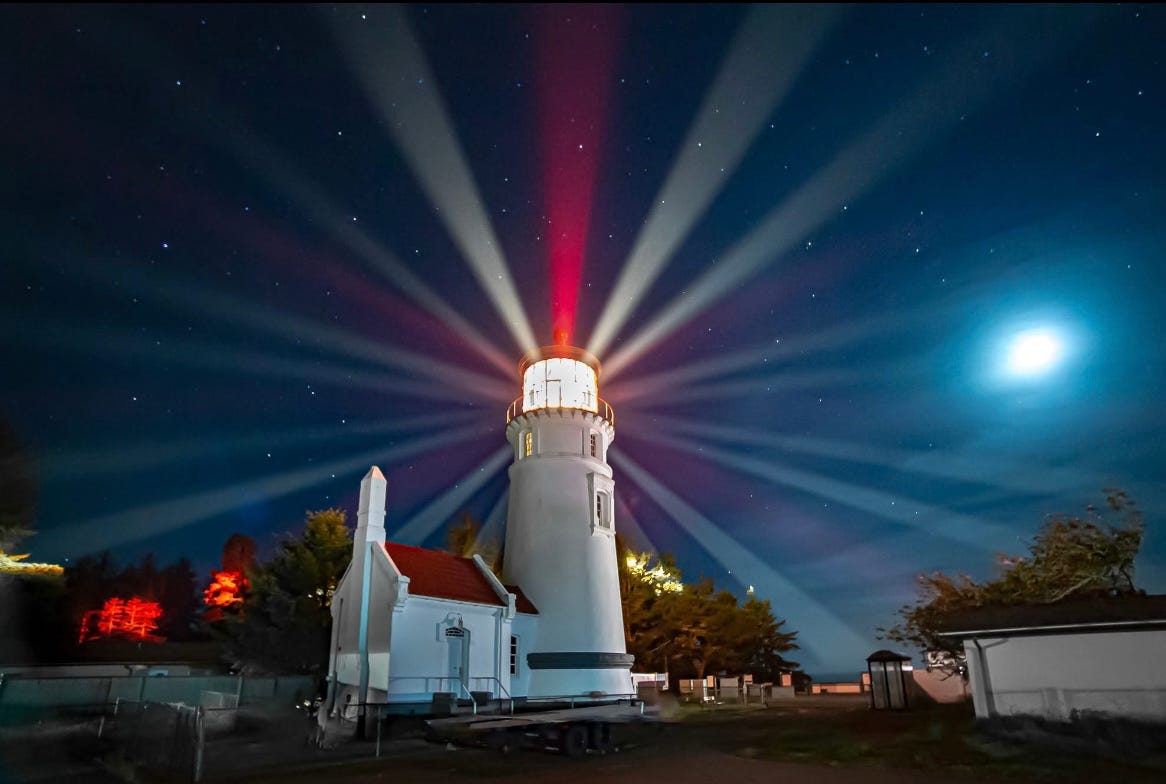
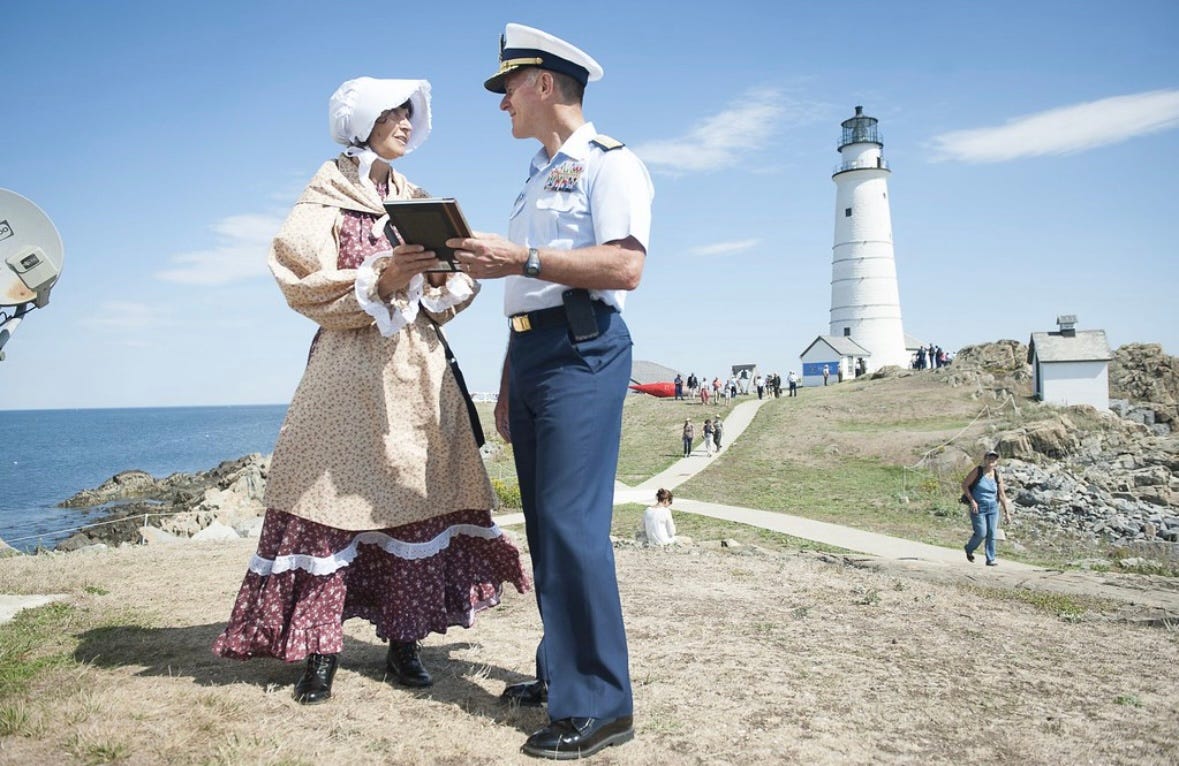


Dear Ron....What a perfect end-of-the-year story!
The photos are amazing! I stare at the lighthouse at the end of Roosevelt Island
every day. Now I'll imagine the lighthouse all lit up. Thank you!
This is so fascinating! Thank you, thank you...